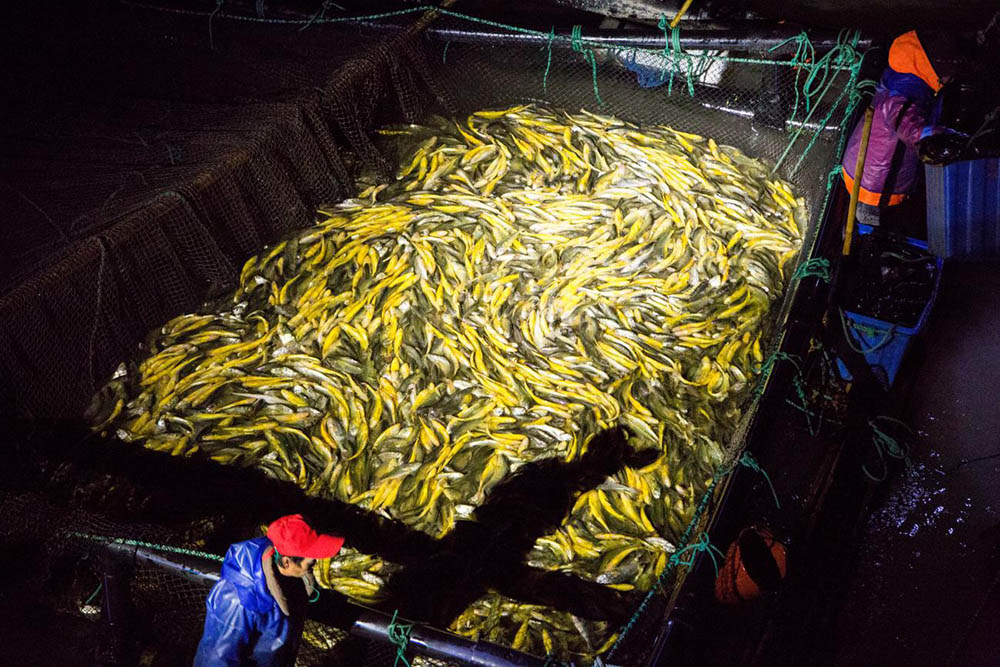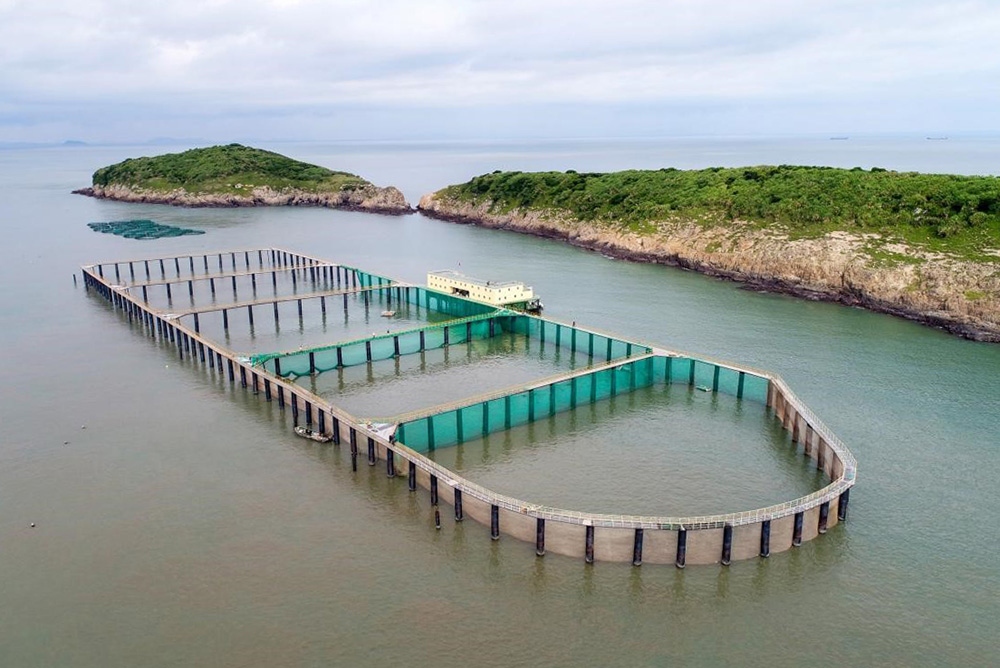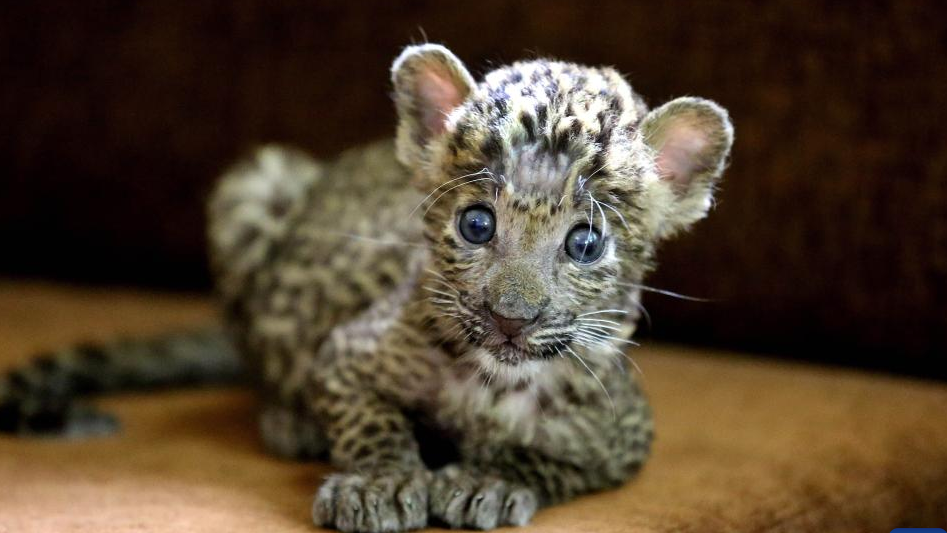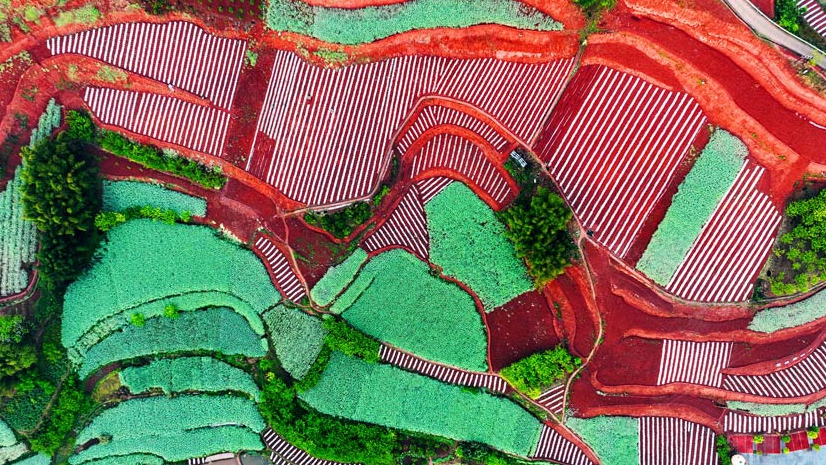Chinese scientific researchers develop facilities to promote deep-sea fish farming
"The more developed a country is, the larger the output of its breeding sector is compared with that of its crop farming sector. The output of China's breeding sector surpassed that of the country's crop farming sector for the first time around 2015," introduced Song Wei, a researcher from the East China Sea Fisheries Research Institute of the Chinese Academy of Fishery Sciences (CAFS).

Photo shows Song Wei, a researcher from the East China Sea Fisheries Research Institute of the Chinese Academy of Fishery Sciences (CAFS). (Photo courtesy of the interviewee)
The output of China's aquaculture sector has topped the world for more than 30 consecutive years, Song noted.
However, China's offshore fish farming faces a lack of space and the structure of the sector is not reasonable, Song said. Therefore, the development of deep-sea fish farming is an inevitable choice to optimize the structure of the sector and propel the transformation and upgrading of China’s marine fishery.
"The large yellow croaker, cobia, grouper, Atlantic salmons, and tuna are among the main fish species cultivated via deep-sea fish farming," Song said, expressing that his research efforts have focused on the large yellow croaker, an endemic fish species in China which is important for the country's marine economy.

Photo shows high-quality large yellow croakers for sale at a market. (Photo courtesy of the interviewee)
Due to excessive fishing, wild large yellow croaker resources were once on the verge of extinction. Chinese scientific researchers have made ceaseless efforts to break through technological bottlenecks associated with the artificial breeding of fish fry and eventually made the massive aquafarming of the large yellow croakers a reality.
To improve the quality of the large yellow croakers, Song and his colleagues built deep-sea fish farms to expand the range of activity for the fish.
"The fences independently developed by our team can enable the smooth flow of water, help expand the area for fish farming and extend the range of activities for the fish," Song introduced. The large yellow croakers raised in this way have well-proportioned body shapes and golden yellow skin, while tasting like those living in the wild. Song introduced that the large yellow croakers raised in this way are priced at between 200 yuan ($28.98) and 400 yuan per kilogram, which is five to 10 times higher than those raised via traditional aquafarming methods.
The fences are also able to withstand strong waves and currents on the seas, Song introduced. The fences installed at four fishing farms at the Dachen Islands, east China's Zhejiang Province, have effectively boosted the farms' ability to withstand winds triggered by several super typhoon events, Song added.

Workers harvest large yellow croakers with a huge fishing net. (Photo courtesy of the interviewee)
The research outcomes achieved by Song and his team have gained recognition from experts both at home and abroad. In 2019, more than 20 experts from China, Chile, and Japan, and other countries, as well as those from international organizations, such as the Food and Agriculture Organization of the United Nations, inspected the deep-sea fish farming technology developed by Song's team, and they agreed that the fish farming method is a distinctive Chinese model for exploring deep-sea fish farming.

Aerial photo shows a fish aquafarm set up on the sea. (Photo courtesy of the interviewee)

Aerial photo shows a fish aquafarm set up on the sea. (Photo courtesy of the interviewee)
Photos
Related Stories
- College graduate succeeds in large yellow croaker farming business in China's Fujian
- Technological innovation enables fish farmers in NW China to increase income while treating wastewater
- Interview: Greece's fish producers eyeing Chinese market
- China's "model farmer" dedicated to improving rice-fish farming
Copyright © 2022 People's Daily Online. All Rights Reserved.









